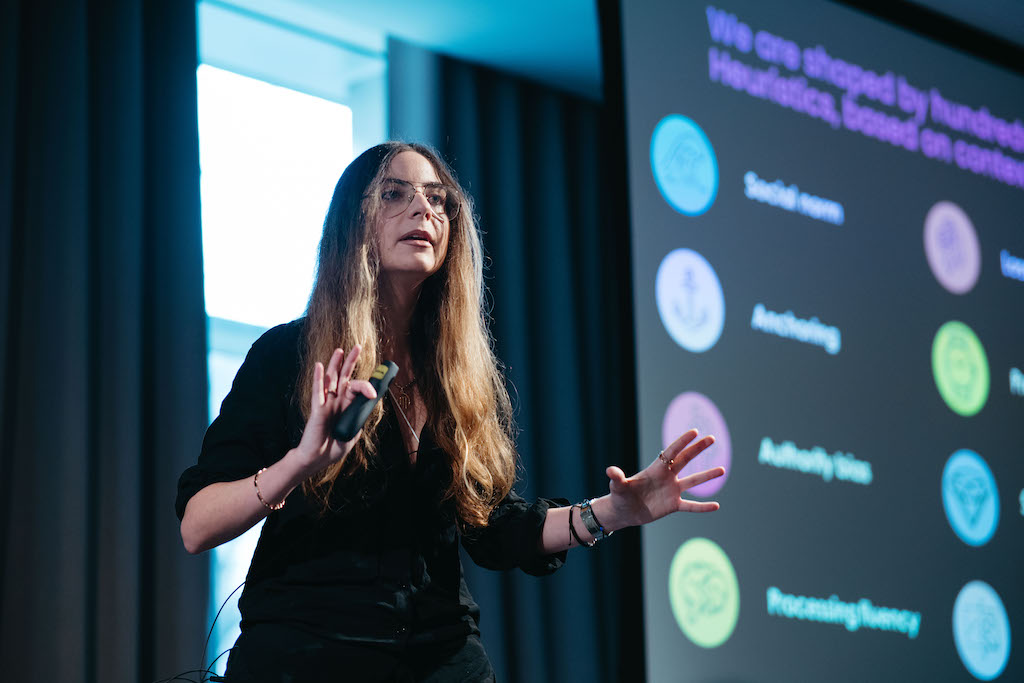At this year’s micebook EXPO, Lea Karam, behavioural scientist and consulting director at Behave, took the stage to explore how behavioural science can be leveraged to design truly memorable and engaging events.
Her keynote, “The Science Behind Memorable Events,” provided insights into the psychology of audience engagement, decision-making biases, and how event professionals can apply these principles for greater impact.
Here are the key takeaways from the session…
Behavioural Science is the Key to Engagement
Events that leave a lasting impact don’t just happen by chance—they are designed with human behaviour in mind. According to Karam, understanding behavioural science means unlocking the psychology of connection, interaction, and influence.
“We want to create memorable experiences by prioritising the human layer. If you don’t factor in human psychology, you’re missing a fundamental piece of the puzzle,” she explained.
She emphasised that every attendee decision—whether it’s engaging with content, networking, or participating in an activation—is influenced by subconscious biases and behavioural heuristics.
Humans Are Predictably Irrational—Use That to Your Advantage
Karam reminded the audience that human behaviour is not rational—it’s shaped by cognitive biases, habits, and emotional triggers. “We all think we make logical decisions, but in reality, we operate more like Homer Simpson than Spock,” she joked, referencing behavioural economics.
Some of the key behavioural biases that impact event engagement include:
Optimism Bias – Attendees overestimate what they’ll do at an event (e.g., thinking they’ll network more than they actually do).
Loss Aversion – People are more motivated to avoid losing something than to gain something new.
Default Bias – Attendees tend to stick with what feels familiar (e.g., the same networking group, same session types).
Scarcity Effect – The perception that something is exclusive or limited increases its desirability (e.g., “Only 10 VIP passes left!”).
Social Norms – Attendees are influenced by what others around them are doing (e.g., if everyone is participating, they are more likely to join in).
The Peak-End Rule: Why First and Last Impressions Matter Most
One of the most actionable insights Karam shared was the Peak-End Rule, which states that people judge an experience based on its most intense moment (the “peak”) and how it ends.
“If you want your event to be truly memorable, focus on delivering one high-impact moment and ending on a strong note—whether that’s an emotional keynote, an unexpected activation, or a VIP experience at the end.”.
Too often, events fizzle out at the end, leading to a forgettable impression. Instead, planners should ensure that the final moments leave a lasting impact.
Personalisation and Audience Mapping Are Essential
Generic event experiences no longer cut it. According to Karam, the future of successful events lies in deep audience mapping and segmentation.
“Forget demographics—age and location don’t define an audience. What truly matters are psychographics: behaviours, values, interests, and motivations.”
She recommended that event planners use behavioural segmentation to tailor content, networking, and activations to different audience personas.
For example:
“Novelty Seekers” may prefer interactive tech experiences and immersive activations.
“Culturalists” might engage more with heritage-inspired storytelling and intimate discussions.
“Networking-Driven Attendees” will be drawn to structured networking and peer-to-peer learning.
Lea suggested starting with two key audience differentiators (e.g., tech adoption vs. tradition preference) and mapping event content accordingly.
Using Social Proof to Drive Engagement
Social proof is one of the strongest motivators for action—and it’s a powerful tool for event marketers.
“People follow trends and want to be part of a movement. That’s why phrases like ‘Join 1,000 industry leaders’ or ‘80% of top executives attend this event’ drive higher engagement.”
She recommended leveraging social proofing techniques such as:
Featuring testimonials from past attendees to reinforce credibility.
Using real-time attendee numbers (“Over 500 professionals have already registered!”).
Encouraging live social media sharing to create FOMO (fear of missing out).
Technology and AI Are Transforming Behavioural Event Design
Technology isn’t just about logistics—it can be used to shape behaviour at events. Karam highlighted how AI, machine learning, and behavioural data analytics can help create more personalized experiences.
“The future of events lies in predictive insights—using AI to anticipate attendee preferences, tailor recommendations, and enhance engagement in real time,” she said.
Examples include:
AI-driven matchmaking for networking.
Personalised event schedules based on attendee interests.
Live sentiment analysis to adjust content delivery dynamically.
But she noted: “No matter how advanced technology gets, there is always a human behind it. If you want to design events that resonate, always bring the human layer into the equation.”
For event planners looking to integrate behavioural science into their strategy, Karam recommended exploring resources like The Decision Lab to gain deeper insights into behavioural psychology.

